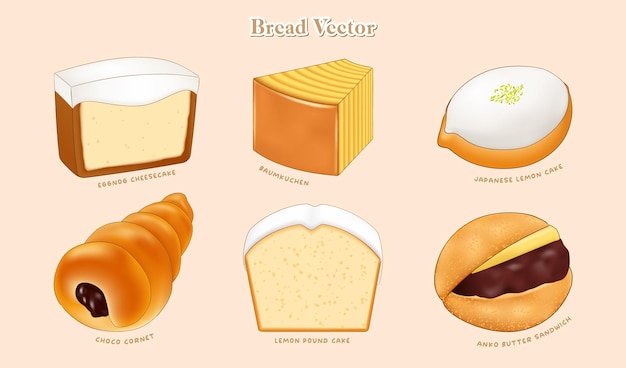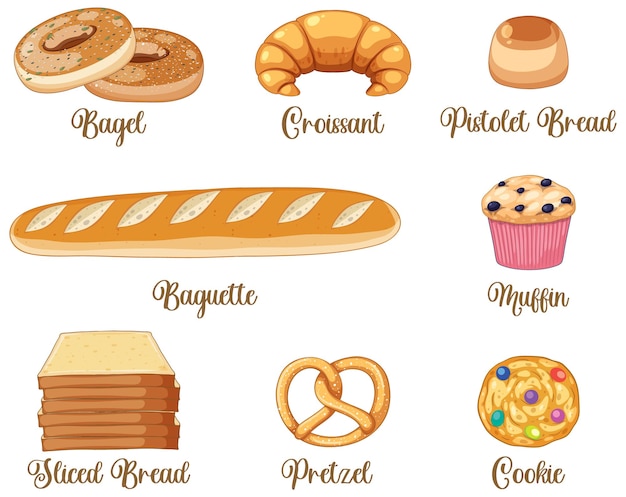From Sourdough to Croissants: Kinds Of Breads and Pastries You Have To Attempt
Exploring the diverse world of bread and breads reveals an elaborate tapestry of flavors and structures, each with its own distinct tale. From the zesty complexity of sourdough, steeped in tradition and all-natural fermentation, to the improved flakiness of croissants, personifying French cooking mastery, there is much to find. Even the detailed layers of Danish breads, commonly filled up with luscious custards or fruits, offer a wonderful contrast.
Sourdough Bread
Sourdough bread, renowned for its distinctive tasty flavor and chewy structure, is a timeless classic that has been valued for centuries. Originating as a staple in ancient human beings, this artisanal bread owes its one-of-a-kind qualities to the natural fermentation process entailing wild yeast and lactic acid microorganisms. The absence of industrial yeast enables a slower fermentation, which boosts the depth of taste and results in a much more digestible loaf.
The conventional method of making sourdough begins with a starter, a combination of flour and water that catches wild yeast from the setting. This starter is carefully maintained and fed regularly to maintain the yeast and germs active. When introduced to dough, the starter initiates fermentation, creating bubbles of carbon dioxide that offer the bread its ventilated framework. The prolonged fermentation period not only improves the texture yet also damages down gluten and phytic acid, making sourdough much more healthy and much easier on the gastrointestinal system.
Artisans around the world take pride in their one-of-a-kind sourdough recipes, each reflecting neighborhood active ingredients and problems - Lahore Bakery. Whether appreciated plain, toasted, or as a structure for gourmet sandwiches, sourdough bread continues to be an enduring icon of culinary craftsmanship and practice

Baguettes
Though often connected with the culinary customs of France, baguettes have become a beloved staple in bakeries around the globe. Well-known by their extended form and crisp, golden-brown crust, baguettes are typically thought about the embodiment of straightforward, yet exquisite, bread-making (Cafe Shop). The origins of the baguette in its modern-day kind can be mapped back to the early 20th century, when advancements in baking innovation permitted the creation of this unique loaf
At its core, a standard baguette makes up just 4 components: flour, water, yeast, and salt. The dough undergoes a meticulous process of working, proofing, and cooking, which results in its characteristic appearance-- a slim, crackly crust wrapping up a soft, ventilated inside.
Baguettes are versatile and can be appreciated in various means. Whether sliced and offered with butter, coupled with cheeses and charcuterie, or utilized as the structure for a sandwich, the baguette uses a fascinating eating experience. This simple loaf showcases the charm of simplicity, making it a long-lasting favorite among bread fanatics around the world.
Croissants
Prominent for their buttery, half-cracked layers, croissants stand as a quintessential symbol of French pastry workmanship. Originating from Austria yet improved in France, croissants are a staple in patisseries and bakeshops worldwide (Islamabad Bakery). Their production includes a careful process referred to as lamination, where dough is folded with butter multiple times to create slim layers that expand wonderfully when baked
The secret to an excellent croissant lies in the quality of ingredients and the precision of technique. The dough has to be handled gently to preserve the integrity of the layers, making sure an airy, light interior.
Croissants can be enjoyed simple or filled up with a range of ingredients such as almond paste, chocolate, or ham and cheese, offering convenience to suit different tastes. Whether relished as an early this morning indulgence or a mid-day reward, croissants exemplify the virtuosity of French baking, making them a must-try for any culinary enthusiast.
Brioche
Brioche's abundant history and glamorous structure make it a standout on the planet of bread and breads. Originating from France, this pleasant, buttery bread go back to at the very least the 15th century and has because become a symbol of indulgence and cooking finesse. Its name, derived from the Old French term "brier," suggesting to knead, highlights the significance of technique in its preparation.
The trick to brioche's distinctive personality lies in its enriched dough, which is laden with eggs and butter, causing a tender crumb and a golden, half-cracked crust. This high-fat content not only improves its flavor yet also adds to its soft, pillowy appearance. Brioche's versatility is an additional factor for its prevalent recognition. It can be enjoyed plain, toasted with a touch of jam, or used as the base for even more sophisticated developments such as brioche à tête, hamburger buns, or even bread pudding (Cafe Shop).
In spite of its apparently simple components, the art of crafting a best brioche requires precision and persistence. The dough undergoes a careful procedure of working, resting, and proofing, making sure that each loaf accomplishes its particular agility and richness. This commitment to high quality and custom cements brioche's condition as a timeless classic in the pastry shop collection.

Danish Pastries

Danish pastries are celebrated for their flexibility. The addition of toppings like nuts, topping, or fresh fruit often improves their visual charm and flavor profile.
The process of making Danish breads demands precision. The dough must be kept at an optimal temperature to guarantee the butter layers stay distinctive, and the folding method requires a careful hand to achieve the excellent equilibrium of flakiness and tenderness.
In the context of worldwide bread offerings, Danish breads attract attention not only for their thorough workmanship but likewise for their ability to provide a fascinating ruptured of tastes and textures in every bite (Lofology Bakery And Cafe). A real testimony to the art of cooking, they remain a beloved selection among bread connoisseurs
Verdict
The expedition of varied bread and bread kinds, from the tasty deepness of sourdough to the buttery flakiness of croissants, reveals a rich tapestry of culinary customs. The crisp crust and airy interior of baguettes, the lavish richness of brioche, and the complex layers of Danish pastries loaded with custard or fruit highlight the virtuosity involved in baking. Each selection uses an unique sensory experience, highlighting the significance of these baked goods in worldwide culinary society.